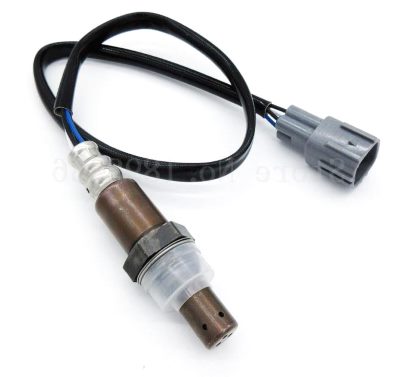What does the oxygen sensor do?

The oxygen sensor, also known as the O2 sensor, is a critical component of a vehicle’s engine management system. Its primary role is to measure the oxygen content in the exhaust gases emitted from the engine. By continuously monitoring the oxygen levels, the oxygen sensor determines whether the air-fuel mixture is too rich (excess fuel) or too lean (insufficient fuel). This information is then relayed to the engine control unit (ECU) to adjust the fuel injection and ignition timing for optimal engine performance and emissions control.
Additionally, the oxygen sensor helps evaluate the efficiency of the catalytic converter, another crucial emissions control component. It measures the oxygen levels before and after the catalytic converter, allowing the ECU to assess the converter’s performance in reducing harmful pollutants.
By providing real-time feedback on the air-fuel mixture’s composition, the oxygen sensor helps maintain the ideal air-fuel ratio for efficient combustion. This contributes to better fuel economy by ensuring the engine operates neither too rich nor too lean.
The oxygen sensor plays a vital role in emissions control by minimizing the production of pollutants like carbon monoxide (CO), nitrogen oxides (NOx), and unburned hydrocarbons (HC). It helps the engine operate within optimal parameters for combustion efficiency and environmental impact.
Over time, the oxygen sensor may degrade or fail due to exposure to high temperatures and harsh conditions. Regular maintenance and timely replacement of a faulty oxygen sensor are necessary to ensure accurate readings and efficient engine operation. By doing so, optimal performance, emissions control, and fuel economy can be maintained, contributing to a cleaner and more efficient vehicle.
Learn more about how the oxygen sensor works
A failing oxygen sensor will cause your car to use a lot more fuel than normal. It may also lead to increased emissions, which in extreme cases can lead to your car failing its Warrant of Fitness.
When to replace the oxygen sensor?
When necessary, an oxygen sensor replacement will ensure that your car’s engine operates smoothly without a reduction in fuel economy or loss of engine power. Generally, an oxygen sensor should last at for at least 100,000 km of use. However, if your engine is correctly maintained, it can last for much longer.
Oxygen sensors are not usually part of a car’s maintenance schedule like oil, filters or a timing belt. Instead, drivers should look out for symptoms that point to a malfunctioning oxygen sensor.
Symptoms of a bad oxygen sensor:
A malfunctioning or bad oxygen sensor can lead to various symptoms that indicate its potential failure. Here are common signs of a bad oxygen sensor:
- Check Engine Light (CEL) Illumination: The most common indicator of a faulty oxygen sensor is the illumination of the check engine light on the vehicle’s dashboard. The sensor is a crucial component in the emissions control system, and when it fails, it triggers the check engine light.
- Poor Fuel Efficiency: A malfunctioning oxygen sensor can cause incorrect readings of the air-fuel mixture, leading to a rich or lean fuel mixture. This can result in decreased fuel efficiency, causing the vehicle to consume more fuel than usual.
- Rough Idle or Misfiring: A bad oxygen sensor can disrupt the air-fuel mixture, causing an irregular combustion process. This can lead to a rough idle or engine misfires, where the engine may shake or stutter when idling or during acceleration.
- Engine Performance Issues: The improper readings from a faulty oxygen sensor can affect the engine’s overall performance. This may manifest as a lack of power, sluggish acceleration, or a noticeable decrease in engine responsiveness.
- Increased Emissions: A malfunctioning oxygen sensor can lead to higher emissions of pollutants, such as nitrogen oxides (NOx) and hydrocarbons (HC). This can cause the vehicle to fail its Warrant of Fitness or result in higher levels of pollution being released into the environment.
New Oxygen Sensor Installation in Hamilton
Is your car in need of an oxygen sensor replacement? If so, we can help! At Grimmer Motors, our team of experienced mechanics can examine, remove and replace a faulty oxygen sensor.
An oxygen sensor replacement will allow for significant improvements in fuel economy, saving you lots of money in the long run. It will also keep your engine running smoothly.
For new car oxygen sensors in Hamilton, contact Grimmer Motors today!


